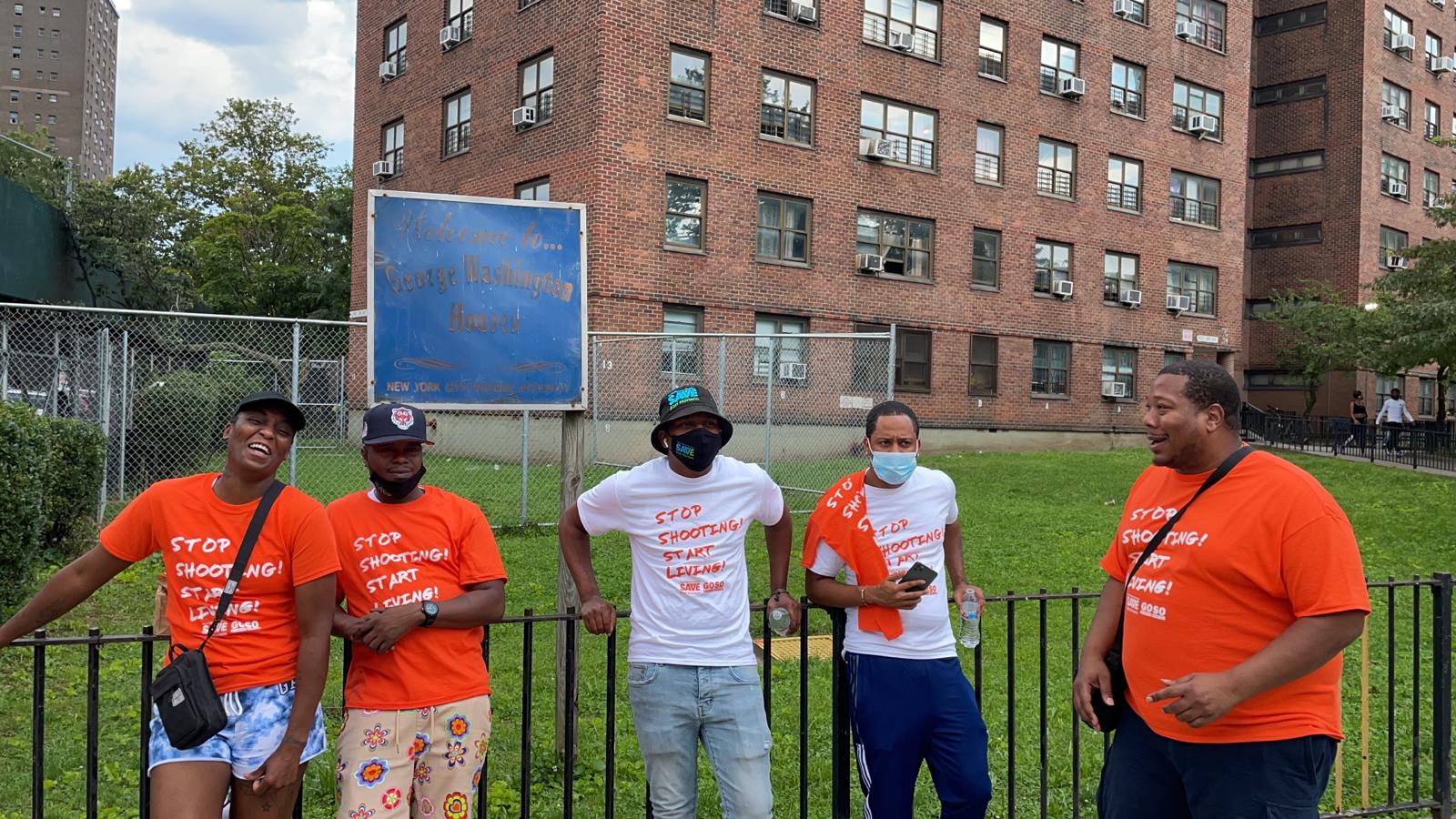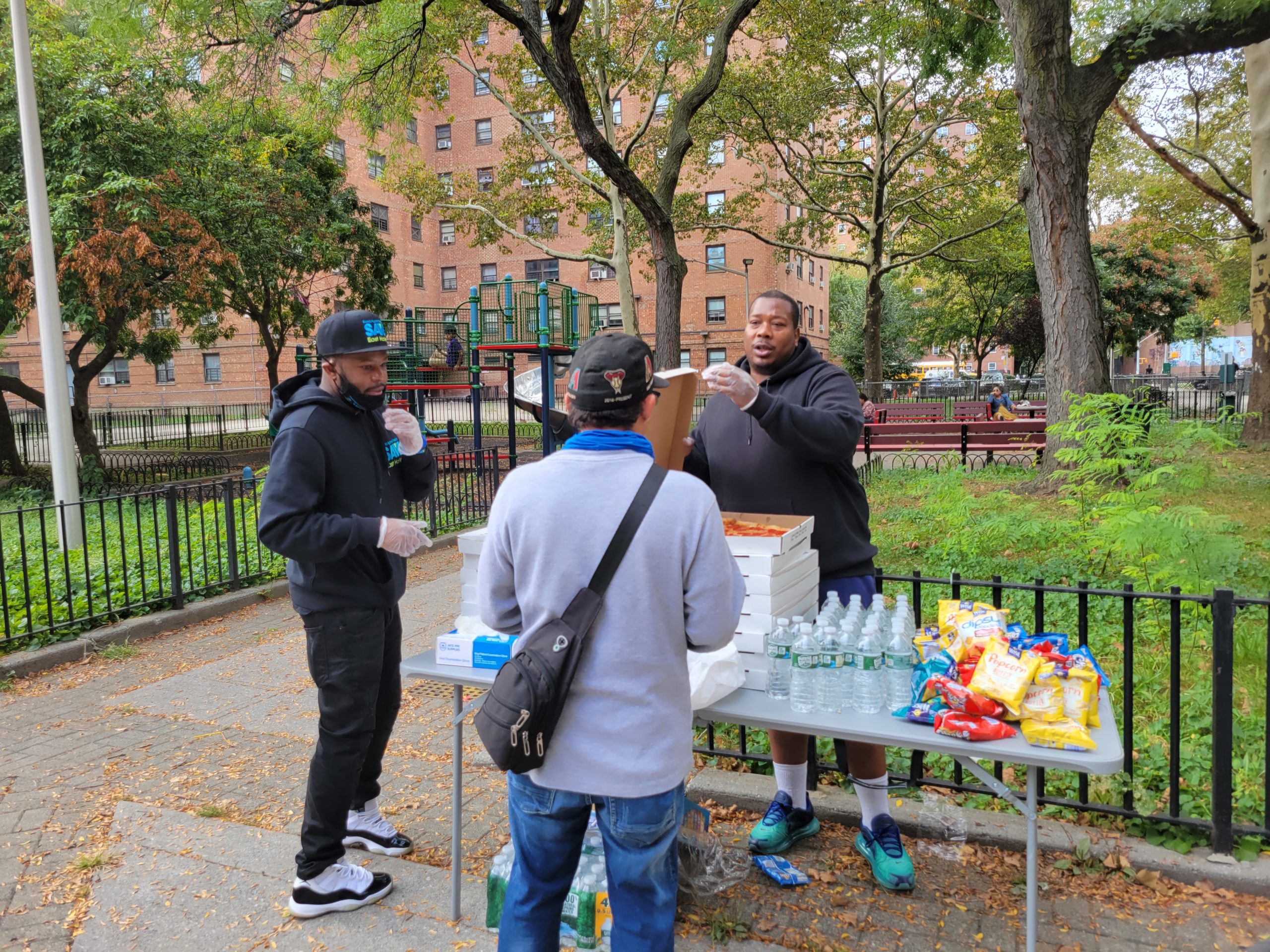There’s not a single person on SAVE Harlem’s staff who hasn’t lost a friend or loved one to gun violence. As one of the group’s violence interrupters put it, “It’s work full of trauma ran by people with a lot of trauma.”
A successful day for Omar Jackson, the organization’s director, is one with no shootings in his catchment, or service area, which covers three public housing developments in East Harlem, from 112th Street to 124th Street in Upper Manhattan. Or it could be a day when one of his staffers successfully defuses a fight, keeping it from turning deadly.
SAVE Harlem is run by people with an intimate knowledge of the place they’re trying to help, and a life-or-death interest in preventing violence there. It’s their neighborhood. SAVE’s model, which enlists community members affected by violence to help keep their peers safe — often without involving law enforcement — has gained popularity as one practical method to ease America’s gun violence crisis.
New York City has been cultivating such a model for years, making hefty financial investments in its city-coordinated Crisis Management System, which includes groups like SAVE Harlem. Since the mass nationwide protests of 2020, as advocates called for more alternatives to police, the city spent more money on CMS, including $42 million last fiscal year, up $11.9 million from the previous year.
The city’s newly elected mayor, Eric Adams, has also thrown his support behind the CMS strategy, promising new investments. SAVE Harlem’s parent organization, which operates numerous other programs, had a budget of $4.6 million last year, with $2.3 million coming from government grants. SAVE’s budget for the 2022 fiscal year is $1.3 million.
Yet funding is only one piece of the puzzle, and violence interrupters are spread thin. In Manhattan, home to 1.6 million people, there are just two sites, each with fewer than 10 violence interrupters. They work long hours, coping with trauma and often putting themselves in harm’s way. When a shooting happens, some outsiders consider it a failure of the model or blame the violence interrupters for not being there.
“We have to always defend our organization to people that just think we should be like Superman — like we gone stop a bullet,” James “Pat” Grace, SAVE’s field supervisor, said.

SAVE Harlem launched in 2016 after the city approached the group’s parent organization, Getting Out and Staying Out, about starting a CMS site in the model of Cure Violence. It’s a strategy born in Chicago that treats gun violence as a public health issue. That year, there were nine shootings in the organization’s service area in East Harlem. The next year, there was just one. From 2017 to 2018, SAVE’s area went 409 days without a single shooting.
It’s hard to say exactly to what extent SAVE’s work contributed to the decline, because the immediate causes of spikes and drops in violence are notoriously hard to pin down. Those who work in community-based violence prevention say even one life saved is a success, but there is also evidence that the Cure Violence model works more broadly. Studies conducted of two CMS sites by the John Jay College of Criminal Justice’s Research and Evaluation Center found that, in addition to a decline in shootings over two years, trust in law enforcement increased, and fewer people turned to violence.
“Over time, attitudes did change, especially in the Cure Violence neighborhoods,” said Sheyla Delgado, a researcher at John Jay who has coauthored several CMS studies. These are time-consuming, challenging, and expensive to do, Delgado said. “So they’re not often funded.”
When a shooting happens, for Jackson and his staff, it’s not just a statistic or a bad headline; it’s often personal. If members of the staff, who are all from East Harlem, don’t know the victim or the victim’s family, they probably know someone who did.
“These are people we grew up with,” said Omar Mims, a violence interrupter at SAVE Harlem. To try to prevent shootings before they happen, SAVE’s violence interrupters mediate conflicts, look for people who might benefit from the services they provide or connect them to, and keep an ear out for conflicts brewing. Minutes earlier, Mims had returned from responding to a fight a few blocks away, where a young man had pulled a gun. The incident had involved Mims’ friend.
“This is our community, and we got to have hands in saving it too,” Mims said.
But using their hometown connection as an advantage means that for many outreach workers and violence interrupters, it’s nearly impossible to unplug.
“We’ve lost a lot,” said Nicole Myers, a program manager at SAVE Harlem. “We’re lucky we have an outlet where we’re able to talk to a therapist. It gets triggering; it gets traumatizing.”
Inside their basement office on 117th Street, SAVE’s staff connect youth to internships and employment opportunities, offer job and vocational training, and serve as a safe haven for people who might be at immediate risk of falling victim to or engaging in gun violence.
For Grace, the field supervisor, seeing teenagers lose the moniker of “at-risk” is the most rewarding part of his job. Helping teens might mean that they’re getting a job that could lead to a career, or learning de-escalation skills in the organization’s Junior Violence Interrupter Program. Over the past five years, more than 100 young people have participated in the organization’s youth-focused programs, many of them landing in college or finding work afterward. Still, the staff at SAVE Harlem are frank in saying that not every youth who comes in for help makes it out unscathed.
Some of SAVE Harlem’s interrupters have found themselves in crossfire. It was hard enough before the pandemic, but COVID-19 ground many social service programs to a halt. People lost jobs, their homes, ways of reliably feeding themselves and their children. Shootings became more frequent in New York, even as many other types of crime dipped early in the pandemic.
“It never stopped for us,” Myers recalled.
It still hasn’t. Shootings surged in much of the U.S. during the pandemic, but, as Mayor Bill de Blasio has trumpeted, they’re now slowing across New York. The city saw 30 percent fewer shooting victims in June, July, and August compared to those three months last year, according to police data.
And SAVE Harlem’s staffers do believe they have helped stabilize their catchment: In the 23rd Precinct, shootings are down 13 percent compared to this time last year.
But Upper Manhattan, where shootings are up 27 percent over 2020’s numbers, hasn’t yet experienced a reprieve. SAVE staffers say it likely won’t until they get more support. In the neighboring 25th Precinct, which includes one public housing development that SAVE expanded to cover earlier this year, shootings remain up 26 percent. As the area struggles, Jackson said he and other SAVE staff routinely get requests for help addressing violence from residents in areas of Harlem outside their catchment area.
“The strategy seems to work best when you have a consistent stream of funding, without any gaps, and I think the city of New York, over the past eight years, has increasingly been great at providing that consistent line of funding,” Delgado said. Researchers, she added, often ask organizations if they have enough staffers to handle the violence, and their answers vary based on their funding and catchment areas. Simply replicating the resources and staffing of SAVE Harlem might not meet the needs of another neighborhood.
“We need to dig in more into why is it so different,” she said. “What is enough?”

